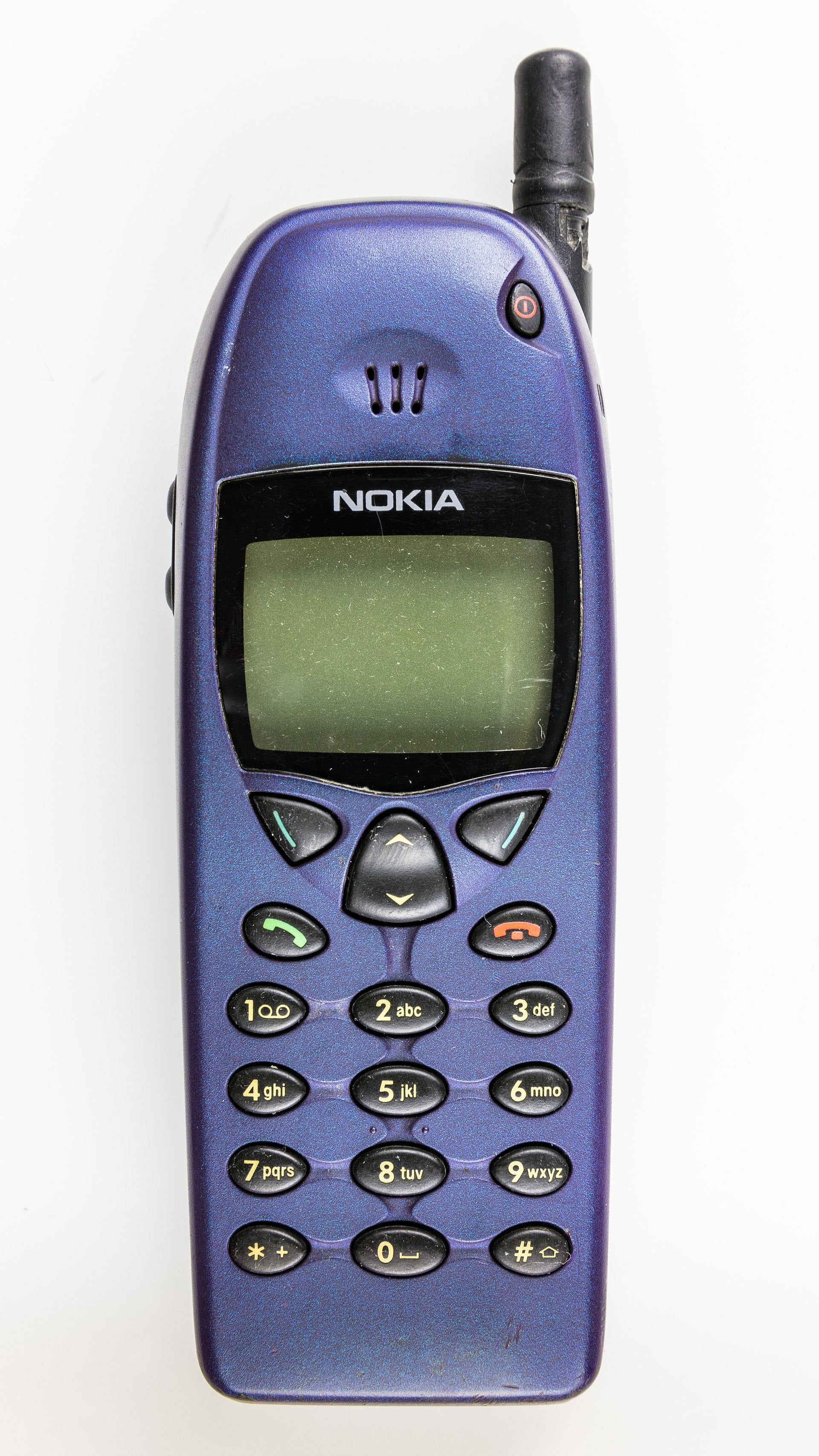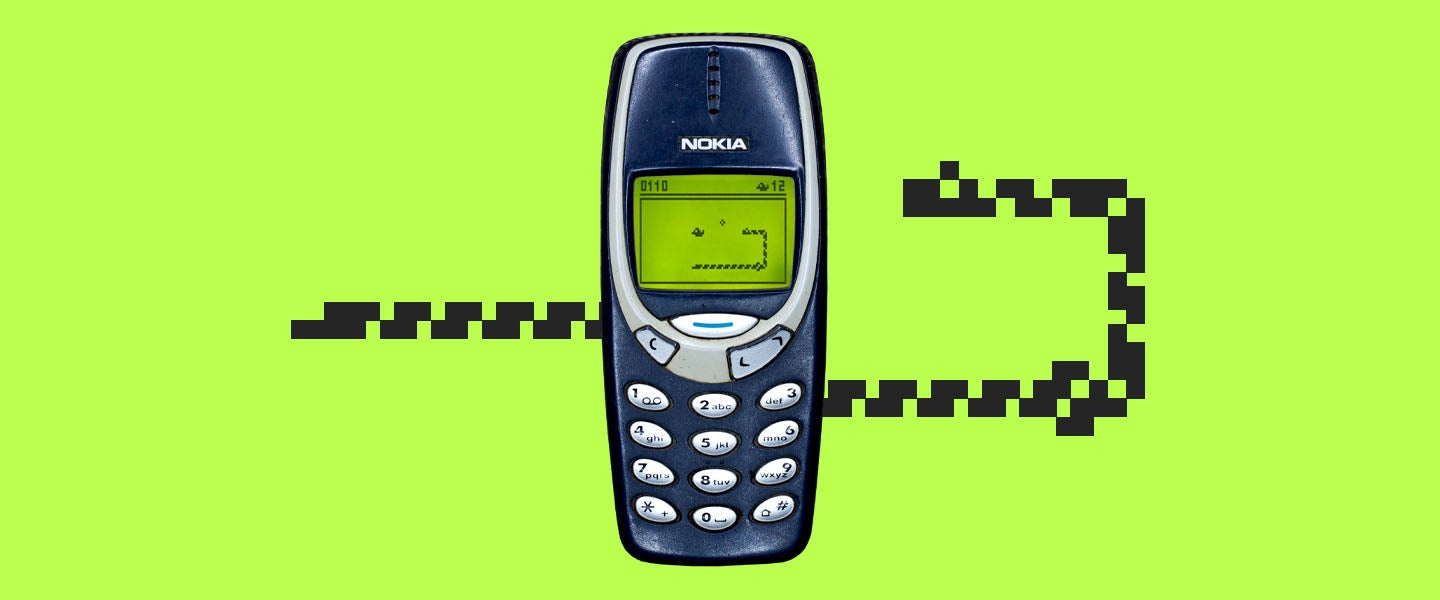Taneli Armanto doesn’t like to tell people he changed the world. In fact, unless you’re a family friend, I’d bet you haven’t heard of the guy. He never usually mentions his greatest achievement, but of course his kids will take any opportunity to brag about it.
After all, their dad created Snake.
Back in 1995, Armanto, a software engineer in Finland, applied to a fast-growing company called Nokia. He had a bit of a gaming background, and so he was tasked with developing “some cool little games” on the upcoming Nokia 6110 mobile phone. He saw his little diversions as just another utility on the device, nothing more glamorous than the calculator and calendar his teammates were building.
Nearly 25 years later, his creation Snake — a game where a slowly lengthening creature tries to gobble up treats without running into itself — is viewed as a turning point in tech and entertainment history. Snake is considered the first major mobile game, the title that launched an industry now worth a potential $100 billion.
Armanto is low-key and humble when he talks about his career. “Very many people appear to be excited when they get to know my background with Snake,” he reflects. “Which is fine, I guess. It’s still good to hear people have enjoyed the game!”

The Phone That Changed Everything
We’ll pick up the story in ’95, when Nokia was just three years into a company-wide overhaul. The new mission: to focus solely on mobile technology. Though mobile phones hadn’t yet reached worldwide adoption, they were quickly becoming smaller, cheaper and easier to use. After releasing the Nokia 2110 in 1993, the company began work on the Nokia 6110, which would debut in December 1997.
Nokia wanted the 6110 to be smaller and faster, with an extended battery and more talk time. It would come with a new and improved user interface, allowing people to easily switch between features on the phone. The company needed developers, and Armanto answered the call. (Quotes have been lightly edited for clarity and length.)

Armanto: In 1995, Nokia was growing fast. We were all pretty new. It was exciting! We were developing new things into the handsets and we got to carry around the newest devices, because naturally, they needed proper testing.
Some of my colleagues on the user interface implementation team thought I’d created computer games before, but I hadn’t! It was my relative they were thinking of. But the others on my team said they’d implement the phone book, calendar, calculator, etc., if I did the games. So, I was tasked with putting the games on the phone, which I was happy with, because I liked games. Board games especially.
I had thought Tetris would be very good, and I even implemented and tested it. But we couldn’t do it. The Tetris Company wanted a share of each handset sold, and Nokia did not want to base any payments on exact numbers of sold products.
I had to consider the specifications of the 6110. I first needed to think about the constraints I’d have: very little screen, just a few keys to control the game, not too much programming memory space available…
The Early History of Snake
The game Snake existed before 1995. It first arrived in 1976 as an arcade game called Blockade and spawned several clones from there. Whether it was Nibbler, Worm or Rattler Race, the basic concept was consistent.
Armanto: People might think Nokia was the first manufacturer to have games on their phones, but they weren’t. It’s just that the earlier non-Nokia handsets that had them didn’t sell in big numbers like the 6110 did.
I had played a Snake-like game in my Apple Macintosh computer before. It was for two players controlling their own snake with a keyboard.
Kyle MacNeill, Vice, “A Love Letter to Snake, the Best Mobile Game”: [Snake is fun] in its simplest, purest video game form, the kind that you experience in Pong or Space Invaders. A chain of pixels, satisfying physics and a sense of the game’s difficulty increasing exponentially with success.
Armanto: After some tests and planning, we knew those snakes would be the perfect solution. It was simple enough to live with those constraints. There is no point in using complex solutions when simple does the job. We tried to dig out some background information in order to find the “owner” for the Snake-like game types like we did find for Tetris, but we couldn’t. So we moved forward.

Building the Game
Armanto: While testing the early versions of the game, I noticed it was hard to control the snake upon getting close to and edge but not crashing — especially in the highest speed levels. I wanted the highest level to be as fast as I could possibly make the device “run,” but on the other hand, I wanted to be friendly and help the player manage that level. Otherwise it might not be fun to play. So I implemented a little delay. A few milliseconds of extra time right before the player crashes, during which she can still change the directions. And if she does, the game continues.
MacNeill: The bigger you are, the harder it is for you to meander around the screen and avoid completing the circuit of doom. Add to that the fact that you’ve only got one life, meaning that each wind round is a shit-scary moment, and you’ve got a thriller in your hands. I mean this is really, really obvious.
Armanto: We made it so the hardest level is actually as fast as the snake can possibly go. Considering screen-refresh rates, and how fast the software could calculate the next snake position, I needed to add delays in the slower levels to give more time between steps. In the fastest level, there is no delay and thus no way to make it faster than that. But it wouldn’t be so fast that it would crash the phone. That wouldn’t happen without memory leaks. I implemented it to have no memory leaks.
Nokia began selling the 6110 in the beginning of 1998, and Snake was part of the package from the beginning.
MacNeill: There’s something retrospectively refreshing about having a game built into a cell phone. No need to download anything, no in-game fees, no updates, no data sapping. As long as you’ve got your Nokia to hand, you can get munching away.
Armanto: I never reached the champion level myself, even though I naturally spent some time testing it. But the best way to win is just practice. Nothing more. Practice makes the champion. Some people, I found out, were utilizing the pause/continue feature to reach very high points. But that is cheating, so it doesn’t count.

‘I Never Imagined It’d Become So Popular’
Maybe it was the massive distribution of the phone, the simplicity of the game or the ultimate combination of the two — but Snake became a phenomenon. People were starting to stare at their cell phones for extended amounts of time.
Hannu Korhonen, writing in his study “Evaluating Playability of Mobile Games with the Expert Review Method,” published by the Association for Computing Machinery: The era of gaming on mobile phones started in 1997, when Nokia published its first mobile game called Snake on the Nokia 6110 mobile phone. The game is probably one of the most played mobile games and it was available on over 350 million mobile phones worldwide.
Armanto: Although I liked to play it myself, and my fellow Nokians loved to test it and talk to me about it quite a lot. I never imagined it would become so popular. I’m sure the product marketing did not see that coming, either. We got word that kids at the school were playing it a lot, maybe too much. And we heard the phones were selling well, too. But maybe that was because of the other features on the phone, I’m sure!
MacNeill: It’s the ultimate mobile game precisely because it has been played by just about everyone, and especially people who have never played any other game of any sort in their lives. It’s built into public consciousness as much as it is built into the Nokia [6110].
Armanto: In unofficial talks, I [was told how important the game was]. But there were other reasons for its popularity, too: the user interface in general, much-improved battery performance, prices going down, etc. But [Nokia] never really acknowledged how or if my game helped sell the phone.
I guess there was some kind of policy, or practice, to “hide” the names of developers behind different features and just say that these are “Nokia” features or inventions — at least in official communication. Eventually, I got a little one-time bonus. I don’t remember exactly when, but it was quite some time after the product programs had completed.

2005 Nokia press release for the Nokia N-Gage: Mr. Taneli Armanto, the creator of the world’s most popular mobile game, Snake, received a special recognition from the Mobile Entertainment Forum (MEF) for his pivotal role in embedding Snake on the Nokia 6100 series of handsets. According to the MEF, Mr. Armanto’s ingenuity and vision have made a significant contribution to the growth of the mobile entertainment industry. Mr. Armanto received the award at MEF’s annual event in London yesterday.
Armanto worked at Nokia for nearly 16 years before becoming self-employed and, later, returning to school. Today, he’s a systems architect at Ineo Oy.
Armanto: Overall, I miss all the years at Nokia. It was cool and inspiring, even after Snake. Though the company grew big and there were issues, the spirit within local teams — at least as far as I got to know — was great. We build a better world, after all.

